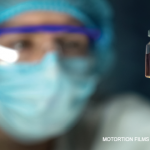At this time, Polishuk returned to Israel, but sent me her friend Jacques Singer, a talented bacteriologist, to be my fellow and collaborator. Jacques learned to speak English during our long discussions about laboratory work, and this activity helped clarify my thinking. What exactly were “sensitized” sheep cells? They were erythrocytes coated with antibody so that they could detect a possible antigen in a patient’s serum. What were antibodies, I thought? They are all gamma globulin or Fraction 2. Why not try using the gamma globulin of other species to coat the sheep cells? We did, and the test worked well. Then came a crucial step. Why not try human Fraction 2, which was readily available since it was being used by the Red Cross in those pre-Salk polio-fighting days. Success! At last we had eliminated the reluctant horse!
Now we wanted to eliminate the sheep, since neither Singer nor I enjoyed the bleeding process and we wanted to avoid introducing foreign organic material. So we tried by substituting one biologically inert particle after another. The most promising were collodion particles, but they were too unstable and the results could not be duplicated. At this point, American industry came to our rescue. Water-based latex paints became widely substituted for oil paints. What were latex-based paints? They were simply easily manufactured latex particles that were dyed and suspended in water. I contacted the major manufacturer, the Dow Chemical Company in Michigan. They sent us various sizes of latex particles, and we eventually found that particles measuring 0.9 micron in diameter could be coated with Fraction 2 and easily detect rheumatoid factor. The latex fixation test was born (another Citation Classic paper). This was most satisfying, since I confirmed the existence of rheumatoid factor as an anti-antibody, or autoantibody.
The simplicity of the latex-fixation technique was soon readily applied to the detection of antibodies in general and promoted the development of immunology as a science.
Word spread rapidly, and I was invited to speak in many countries. I met with the world leaders in rheumatology including such major figures as Forestier and Coste in France, Bywaters in England, Michotte in Belgium, Nana Svartz in Stockholm, and many others. I am now an honorary member of a dozen foreign medical societies, and the ACR honored me with its Presidential Gold Medal.
The word “rheumatology” and its derivative “rheumatologist” both started in 1949. So did I. Alas, I have aged, but the field of rheumatology has flourished and continues to grow. I am happy to have been involved in its earliest years and look forward to exciting new developments.

